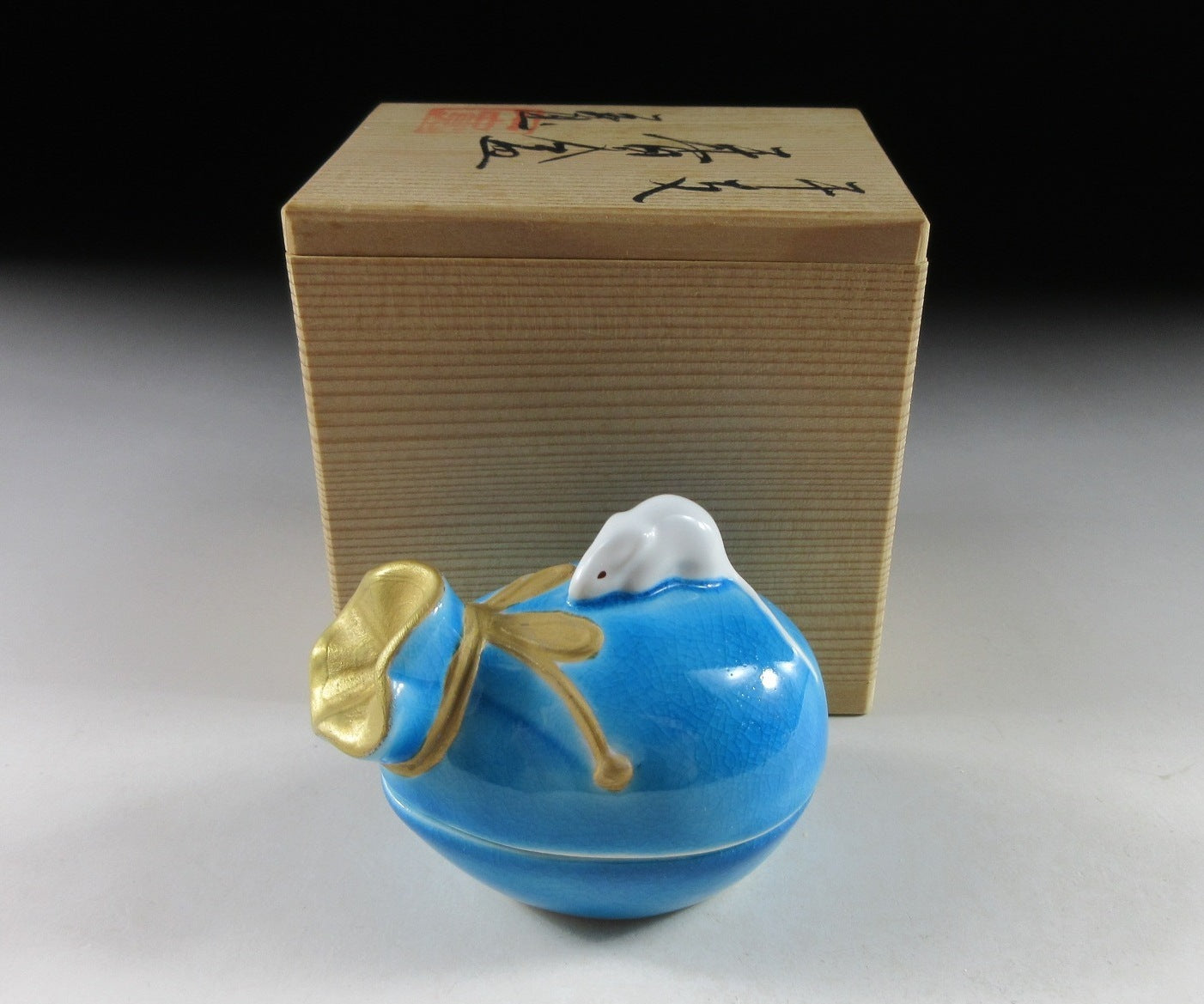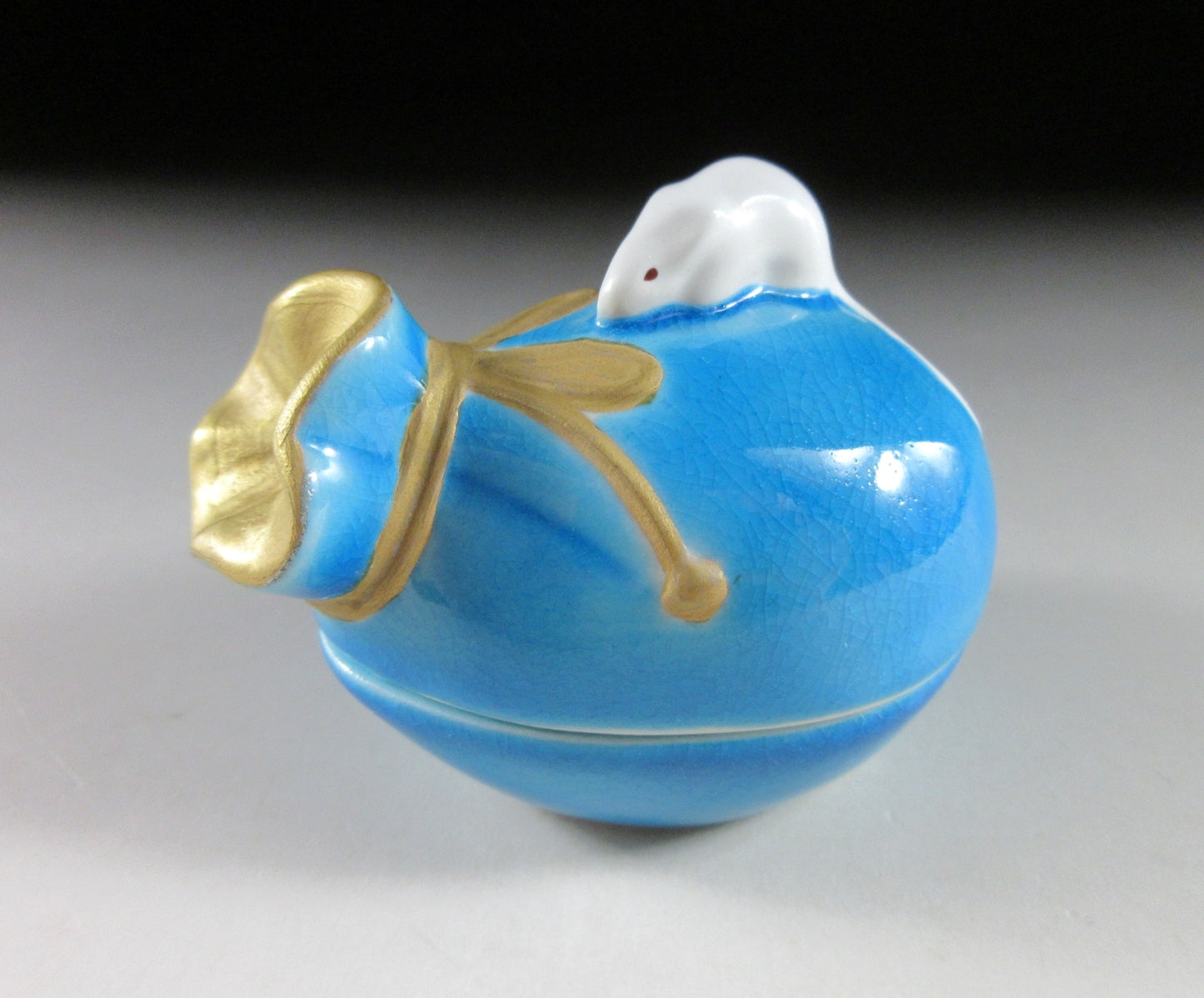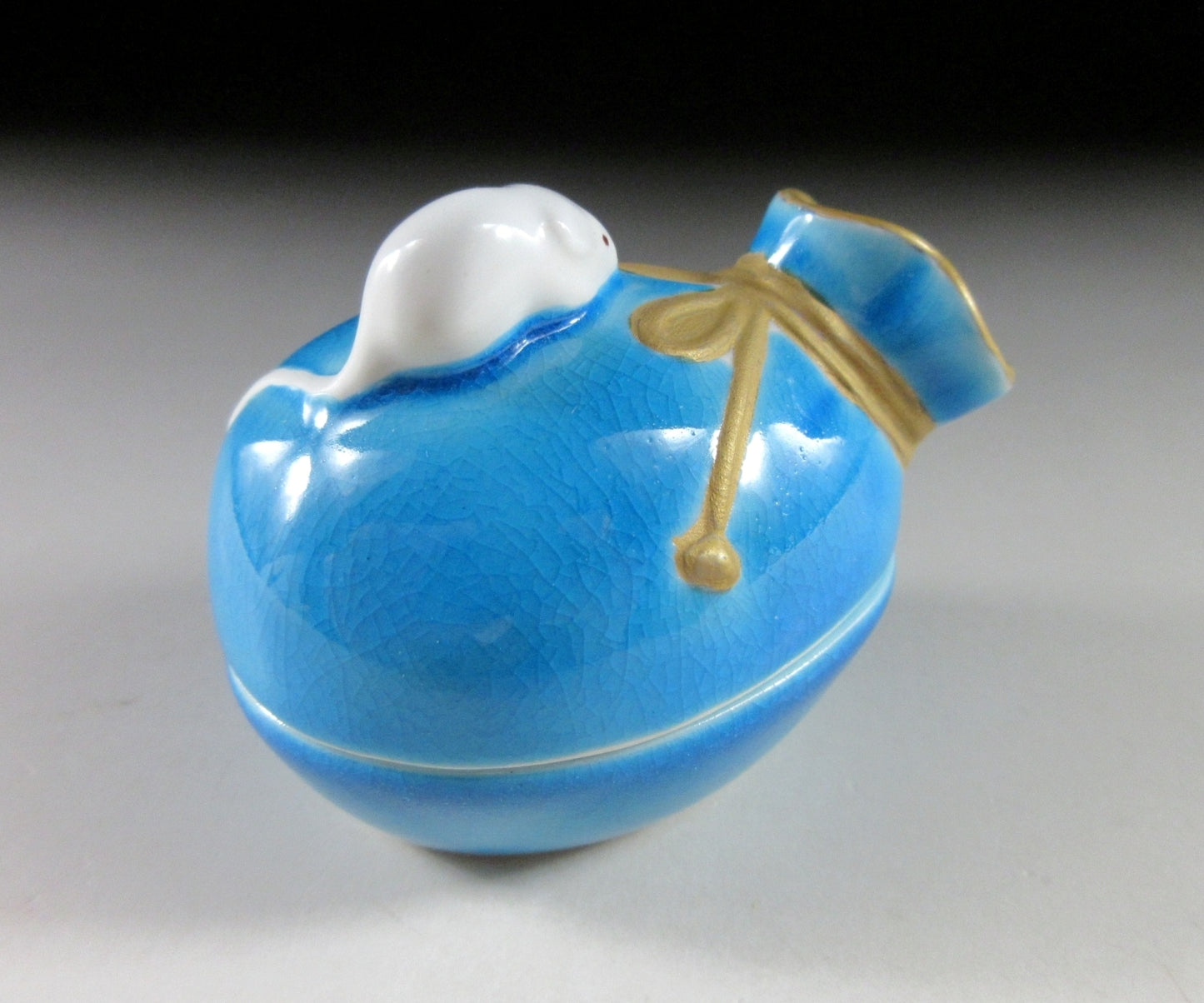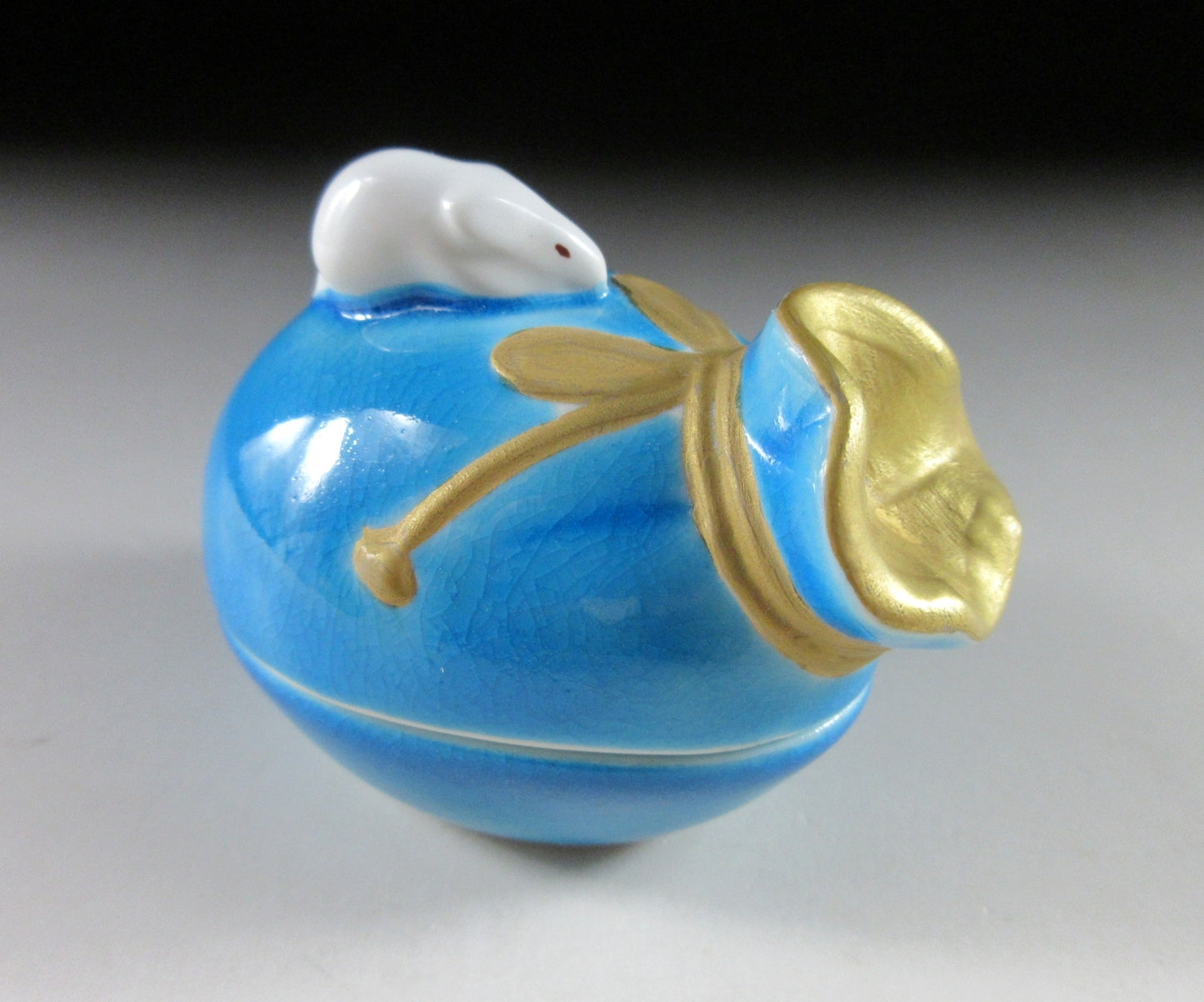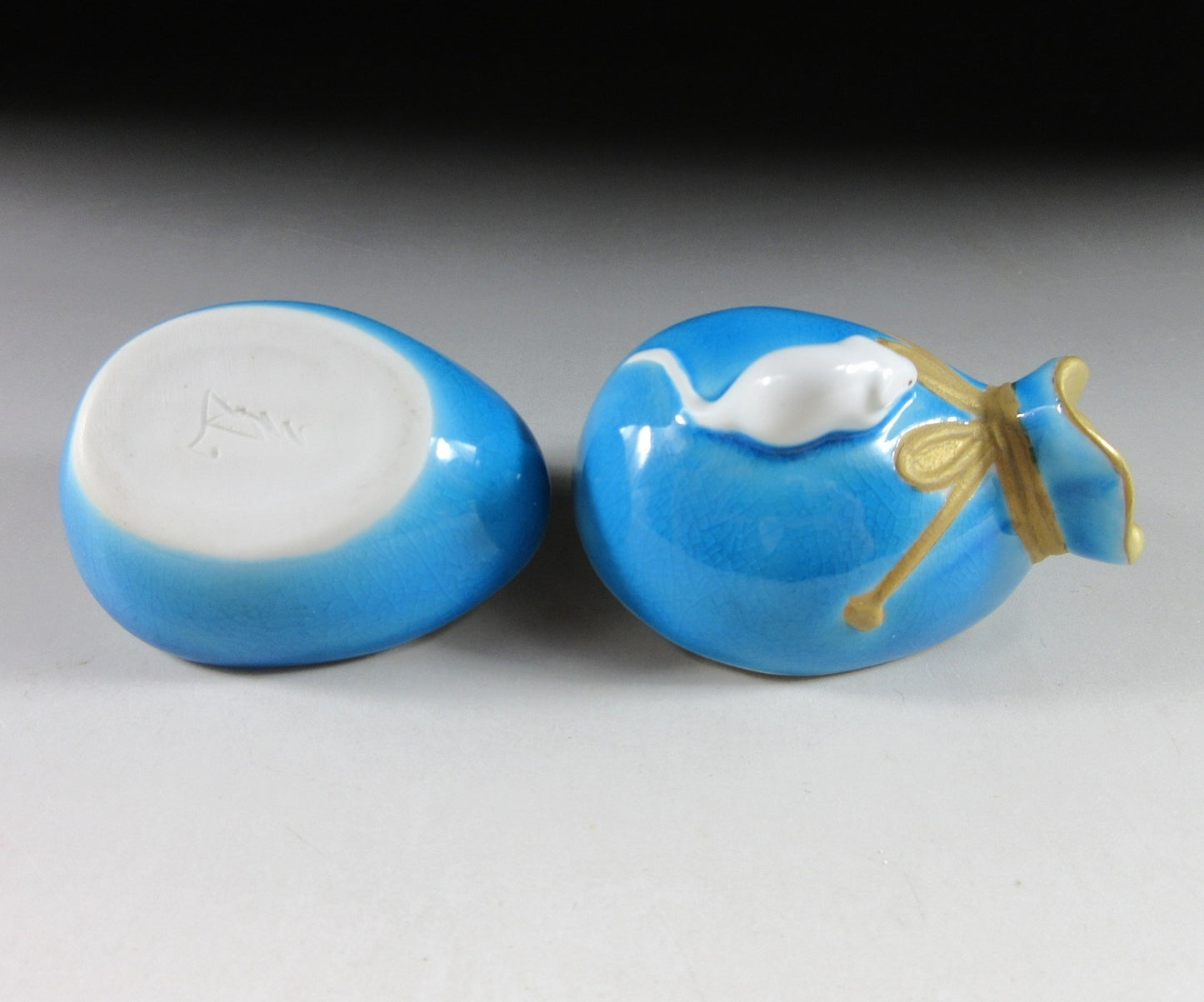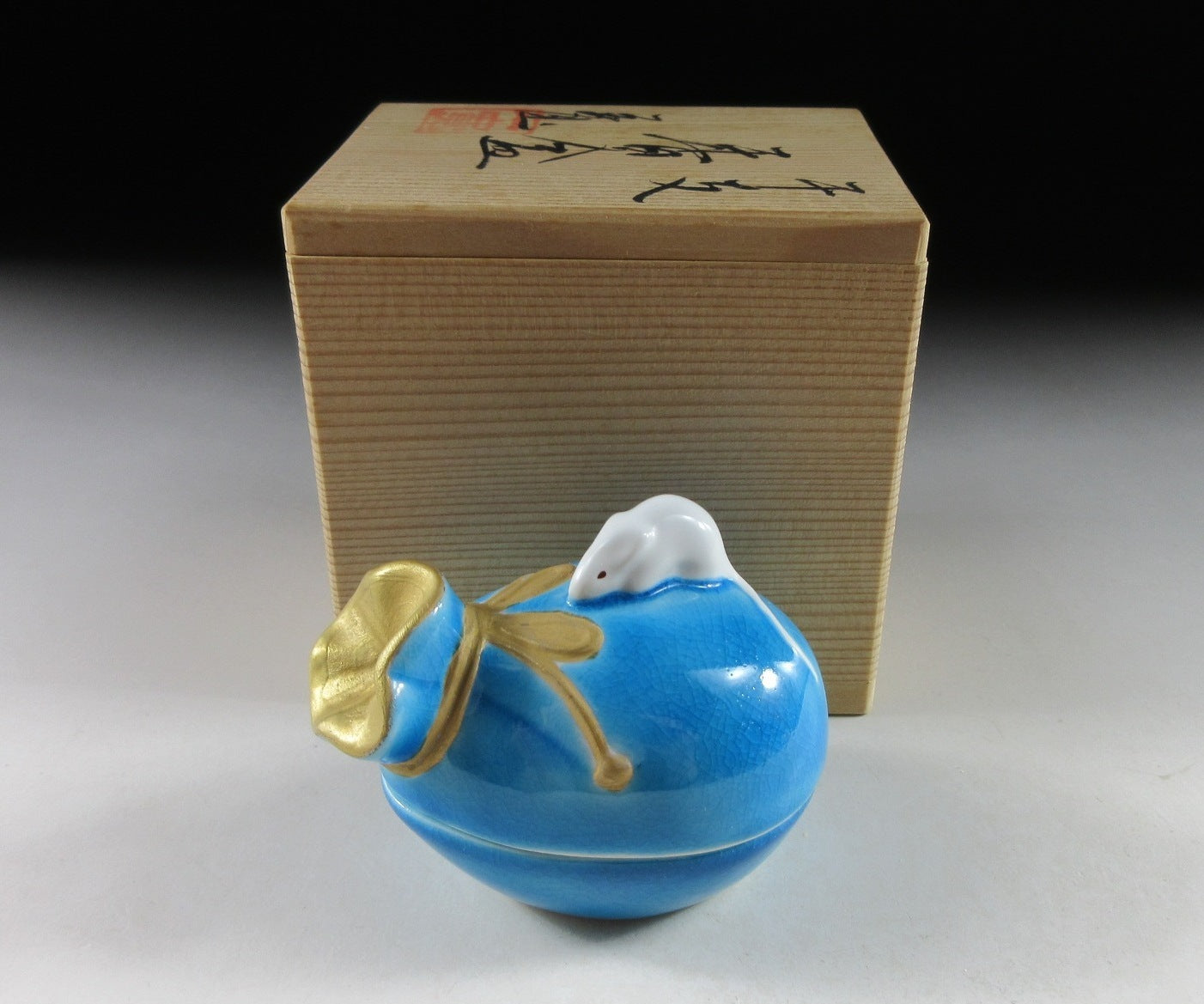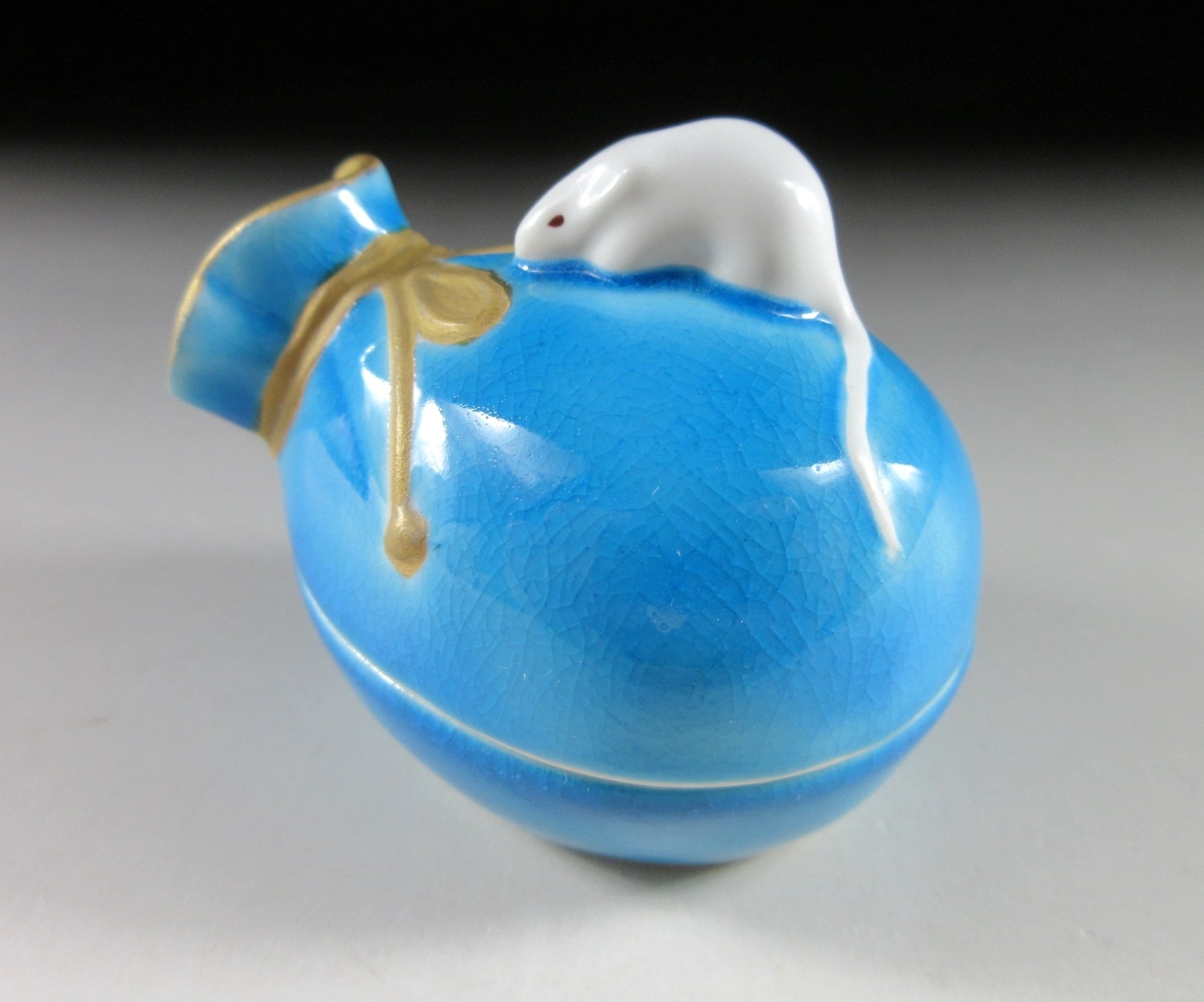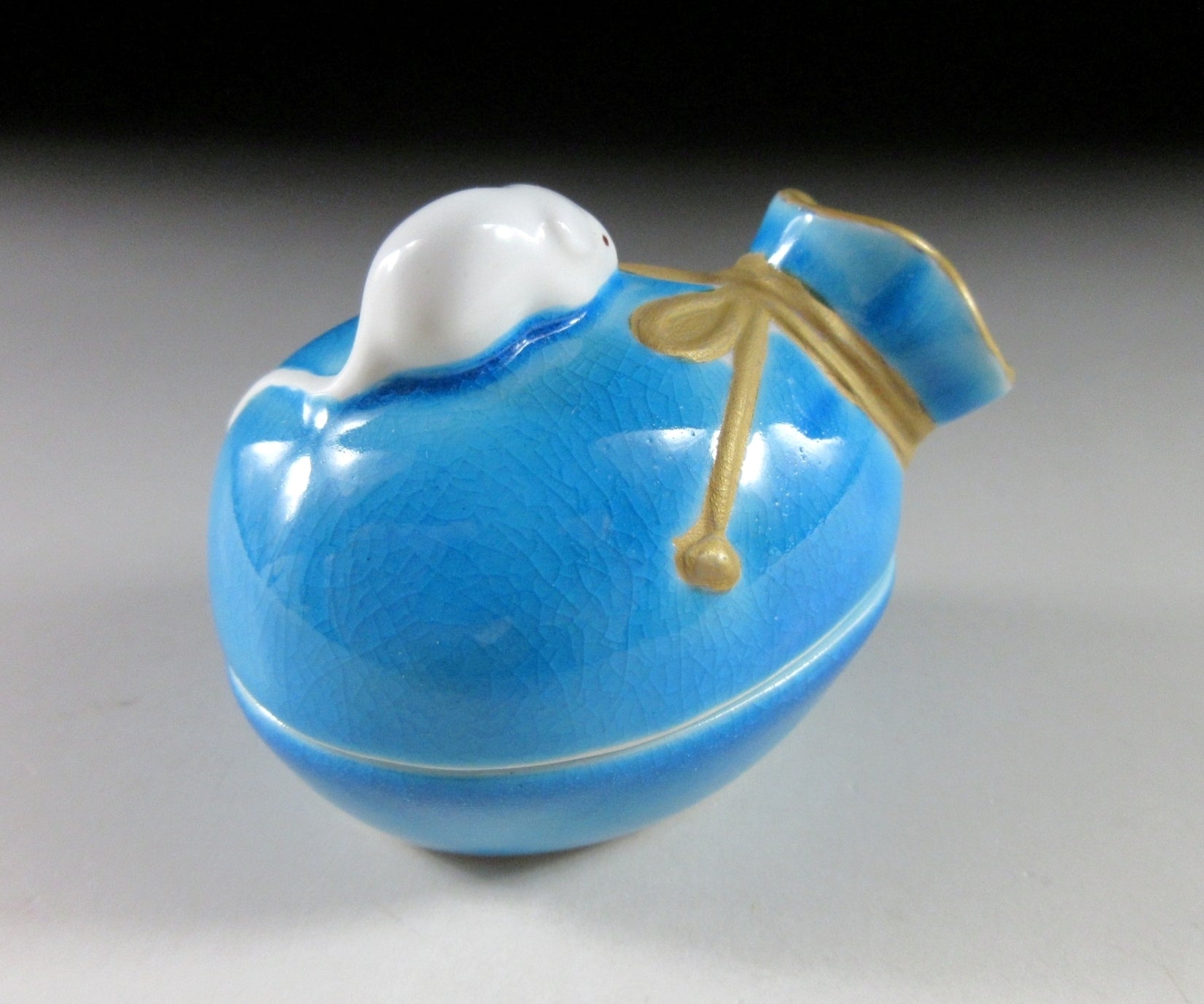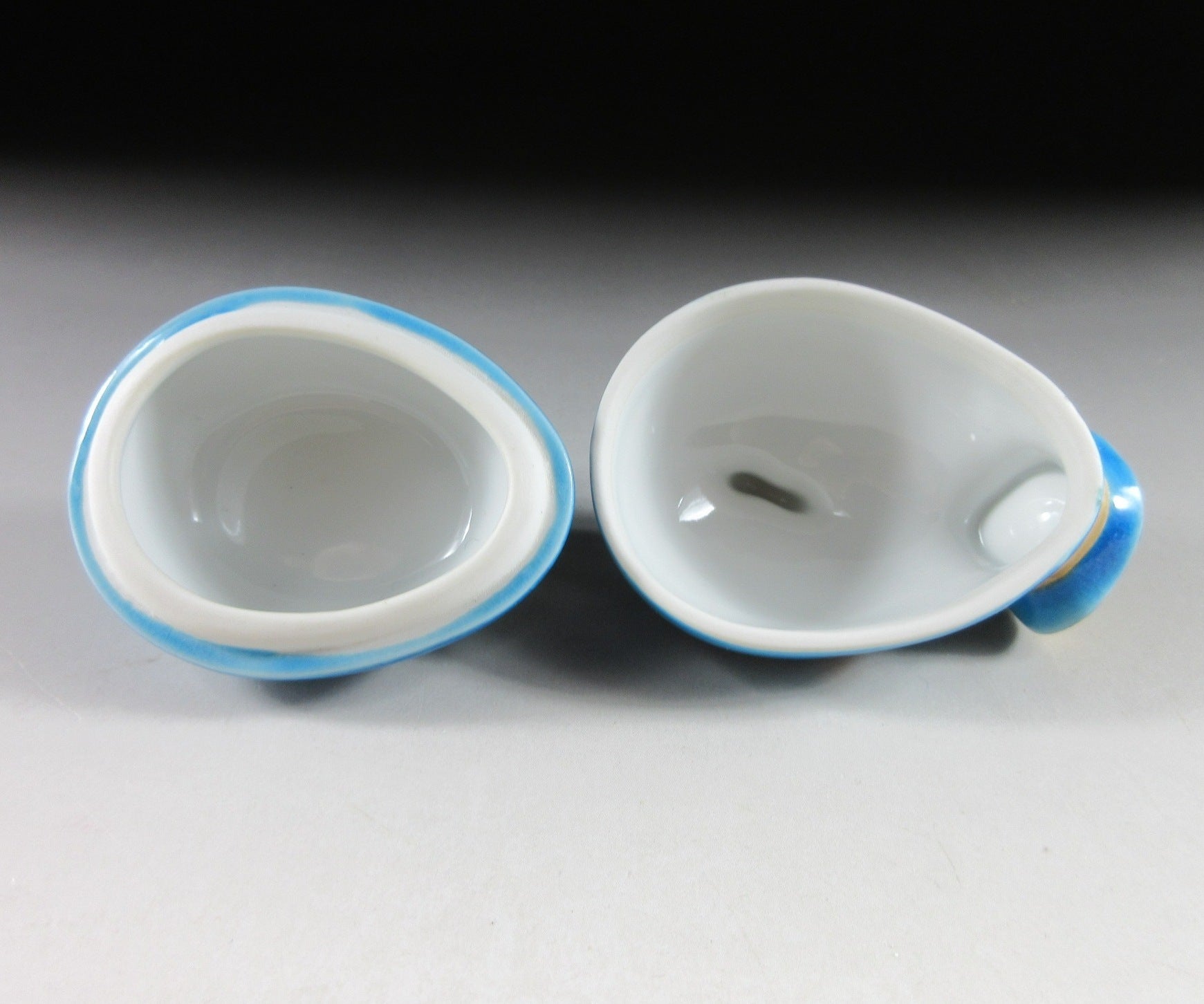Kominka Zakka
Kawajiri Ikkan Year of the Rat Kogo
Kawajiri Ikkan Year of the Rat Kogo
Couldn't load pickup availability
*SHIPPING OPTIONS VARY DEPENDING ON THE DESTINATION, PLEASE SCROLL TO THE END OF THIS LISTING FOR MORE DETAILS.
This listing is for a Kyo-ware kogo made around 30 years ago by distinguished potter, Kawajiri Ikkan. It is moulded to resemble a ‘kinchaku’ drawstring bag with a small white rat perched on top. Its size and shape is suitable for holding both woodchip and kneaded incense, although pottery kogo are typically used for kneaded incense during the cooler months. This piece was most likely made to commemorate the Year of the Rat back in 1996. The signature of the potter can be found on the bottom, and it comes with its original sign wooden storage box.
Kawajiri Ikkan (1930-2008) was a Kyo-ware master potter who worked out of Teizan Gama in Kyoto. He studied under Kiyomizu Rokubei and quickly made a name for himself for his bold use of colour. During his long and successful career he served as a council member of the Contemporary Crafts Artists Association, and Director of the prestigious Nitten Fine Arts Exhibition. In 1984 and 1988 he received the Special Selection Award in the category of Crafts and Fine Arts at the Japan Art Academy Exhibition, and in 2001 his work “Abundance” won the Japan Art Academy Award. **Fellow sellers, this information was researched by Kominka Zakka and CANNOT be used in your own listings.
Kogo are for holding incense during the tea ceremony. Kogo vary depending on the season. In summer wooden kogo are used for holding chips of incense wood, and in winter ceramic kogo are used for holding kneaded incense intended for the hearth. During the tea ceremony, incense is added to the charcoal fire during the charcoal-laying procedure.
Kyo-ware originated in the 17th century in Kyoto and features overglaze enamel pigments on a porcelain base. The porcelain base acts as white canvas, allowing for beautiful and superior quality designs to be painted. Kyo-ware artisans traditionally produced chawan and utensils for the tea ceremony, however contemporary potters specialize in tableware, tea ceremony items, incense holders, and okimono. Kyo-ware was designated as a traditional craft in 1977.
Sizes
Box: H.8.4cm (3.3”) x 8.9cm (3.5”) x 5.9cm (2.3”)
Kogo: H.4.9cm (1.9”) x L.7cm (2.7”) x W.4.8cm (1.8”)
Condition
It’s in very good condition with no chips or cracks, the box however is a little spotty.
THESE ARE SHIPPING ESTIMATES BASED ON THE CURRENT GLOBAL SITUATION
**Germany, France, Greece, Spain, Poland, Austria, Slovakia, Lithuania, Slovenia: NO SHIPPING. Very strict and expensive packaging laws in place and we are not licensed to send products to these countries. We have no plan to register at this time because the process is in some cases very expensive and complicated, plus each country has its own set of regulations and application process.
**USA, UK, Canada, Australia, New Zealand, Switzerland, Norway: Airmail Small Packet (approx. 15-28 days). Combined shipping available up to 2kgs for Airmail Small Packet (please send us a message).
**Asia: Airmail Small Packet (approx. 15-21 days). Combined shipping available up to 2kgs for Airmail Small Packet (please send us a message).
**Central Asia, Middle East, South Africa, Brazil, Mexico: EMS Express 10-15 days.
**Russia: No shipping methods available.
Share
